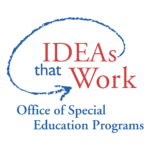The article examines how the local contexts of school districts affect teacher’s perceptions of special education and students. The article is useful to practitioners because it gives insight into how teacher’s perceptions may be related to disproportionate outcomes.
Skiba, R.J., Simmons A., and others. “The Context of Minority Disproportionality: Practitioner Perspectives on Special Education Referral”. Teachers College Record. Volume 108, No. 7, 2006: 1424-1459.
The article is comprehensive in both its scope and depth in explaining disproportionality. It clearly lays out what research has said about the issue since the 1960’s and offers a thorough snapshot of current understandings of inequities in special education.
Skiba, R. J., Simmons, A. D., and others. “Achieving Equity in Special Education: History, Status, and Current Challenges.” Exceptional Children. Vol. 74, No. 3, 2008: 264-288.
The article provides a conceptual map for understanding how policy, practice and people intersect in schools. The article is useful for practitioners that want to understand how federal mandates, school practices and the multitude of individuals in schools can coalesce into a system that improves general and special education.
Klingner, J. K., Artiles, A. and others. “Addressing the Disproportionate Representation of Culturally and Linguistically Diverse Students in Special Education through Culturally Responsive Educational Systems.” Education Policy Analysis Archives, 13(38), 2005: 1-41.
This audio recording features a group of educational leaders discussing assessment biases issues in special education.
Romney, Lee. 2019. Black Families and Special Education. Conference Audio Recording. California Association of School Psychologists.
This article discusses the struggles of distance learning with a focus on English language learners and students with disabilities. The topics it covers include: 1) Listen to families, 2) Making online learning accessible and 3)Focus on co-teaching.
Mitchell, Corey. 2020. Bridging Distance for Learners With Special Needs. Education Week.
This guide, prepared under the direction of the Special Education Division of the California Department of Education (CDE), provides educators with policy and practice for most appropriately and effectively supporting the educational advancement of student with disabilities who are also English learners.
California Department of Education. 2019. California Practitioners’ Guide for Educating English Learners with Disabilities. Sacramento, CA: California Department of Education.
This guide, prepared under the direction of the Special Education Division of the California Department of Education (CDE), provides educators with policy and practice for most appropriately and effectively supporting the educational advancement of student with disabilities who are also English learners.
California Department of Education. 2019. California Practitioners’ Guide for Educating English Learners with Disabilities. Sacramento, CA: California Department of Education.
The paper by the Council for Children with Behavior Disorders critically questions the effectiveness of federal policy and disproportionality monitoring mechanisms. It is an important piece to read because it questions how the provisions in IDEA, and compliance to IDEA, can address disproportionate outcomes. It offers practitioners the chance to reflect on how they understand IDEAs relationship to abatement of disproportionate outcomes.
Skiba, R., S. Albrecht, and D. Losen. 2012. CCBD’s Position Summary on Federal Policy on Disproportionality in Special Education. Arlington, VA: Council for Children with Behavioral Disorders.
This is a compilation of resources that the San Francisco Unified School District has collected on COVID-19 concerning special education with a focus on autism.
San Francisco Unified School District. COVID-19 Resources for Students in Special Education . San Francisco Unified School District.
https://www.sfusd.edu/resources-families-1
This research study provides an overview of trends and issues in both underrepresentation and overrepresentation of English learners in special education. Contributing factors for variability, as well as recommendations for future research and improved practice are provided.
Counts, Jennifer, Antonis Katsiyannis, and Denise K. Whitford. 2018. “Culturally and Linguistically Diverse Learners in Special Education: English Learners.” NASSP Bulletin 102 (1): 5–21.


